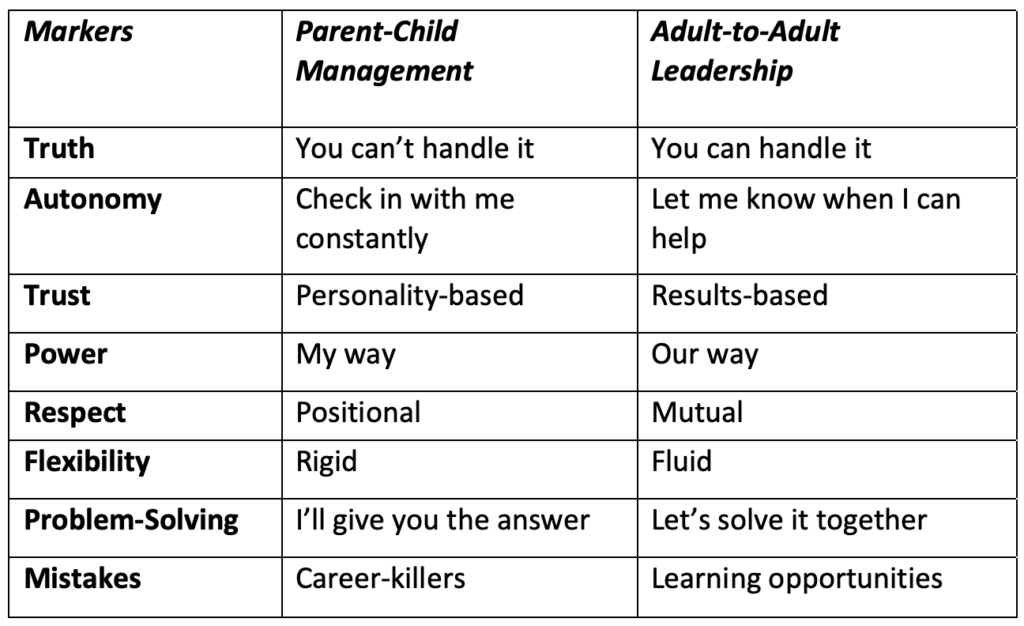Is Your Approach Parent-Child Management or Adult-to-Adult Leadership?
Years ago, when I was a rising leader in corporate-land, I worked for a company president who regularly asked a thought-provoking question, “Are we engaging in an adult-to-adult conversation or a parent-child conversation?”
When she asked the question, I don’t think she had in mind the nurturing type of parent-child relationship that most of us would likely prefer, but the type in which the parent is the alpha and the child is the beta. It’s the approach you could sum up with the name of a way before my time TV sitcom, Father Knows Best.
What she rightfully had a problem with was a paternalistic management approach that assumed that the top people had all the information and answers to be shared as they saw fit. The “worker bees” should be given what management thought they needed when they needed it. What she was looking for instead was a leadership approach that kept people fully informed and engaged so they could make intelligent decisions and choices while doing their best work.
The changes around how and where work gets done that have taken root in the past two years are really kind of breath taking when you stop and think about it. There’s a whole new set of challenges that leaders have to address to keep their best people engaged. That can be stressful. Sometimes when we’re under stress we regress and try to hold on to the way things used to be even if they no longer work. For that reason, I think it’s worth revisiting some distinctions between old school parent-child management that drives disengagement and present-day adult-to-adult leadership that drives engagement.
Assuming that you want to create a work environment that is more adult-to-adult than parent-child, here are some markers you can use as a guide and reality check:

To be honest, when I look over that table, I think the markers in the adult-to-adult leadership column are a pretty good running start on a parenting checklist as well. In any case, from a leadership standpoint, what would you add to the list of markers? What do you agree with? What do you take issue with?
If you’re reading this through LinkedIn, leave a comment. If you’re reading this directly on the Eblin Group blog, please send me a note.
If you liked what you read here, subscribe here to get my latest ideas on how to lead and live at your best.